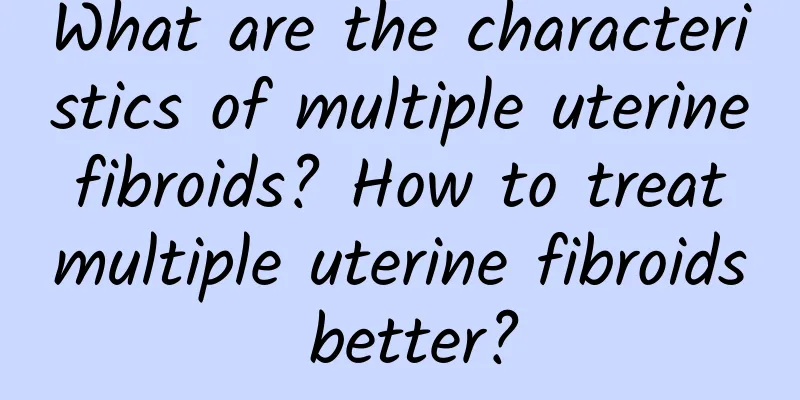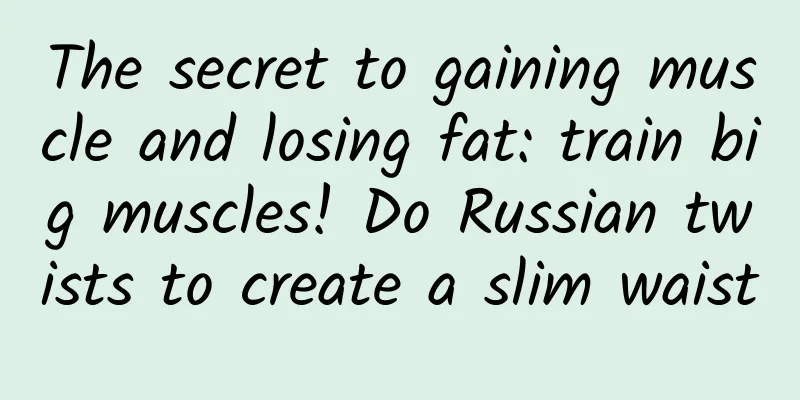What are the characteristics of multiple uterine fibroids? How to treat multiple uterine fibroids better?

|
What are the characteristics of multiple uterine fibroids? This is a question that many female friends are concerned about. Uterine fibroids are a common gynecological disease, which refers to tumors caused by abnormal proliferation of smooth muscle cells in the uterus. They usually grow in the uterine wall and sometimes in the uterine cavity. So, what are the characteristics of multiple uterine fibroids? First of all, multiple uterine fibroids often cause irregular menstruation. Because the fibroids occupy the space inside the uterus, they affect the uterus's ability to contract, resulting in excessive or insufficient menstrual blood, or even prolonged menstruation. These are common characteristics of multiple uterine fibroids. Secondly, multiple uterine fibroids may also cause abdominal pain or back pain. As the growth of fibroids compresses the tissues and nerves around the uterus, it can cause abdominal discomfort. The degree of pain varies depending on factors such as the number, size, location, and growth rate of the fibroids. Some women experience mild bloating or dull pain, while others may experience severe abdominal pain or back pain. Therefore, abdominal pain or back pain is also a typical feature of multiple uterine fibroids. Finally, multiple uterine fibroids may also cause pelvic compression symptoms. When multiple fibroids gather in the uterus, they will compress the organs around the pelvis, leading to urinary system problems such as difficulty urinating, frequent urination, and urgency. Some women may also experience constipation and rectal compression. These pelvic compression symptoms are also one of the characteristics of multiple uterine fibroids. The best way to treat multiple uterine fibroids is to individualize the treatment plan according to the patient's specific situation. Usually, if the fibroids do not cause obvious symptoms, the doctor may recommend observation and regular checkups. For those patients whose symptoms are severe or affect their quality of life, the doctor may consider drug treatment or surgical removal. Drug treatment mainly includes oral contraceptives, anti-progestins and luteinizing hormone. These drugs can inhibit the growth of fibroids and relieve symptoms. However, drug treatment can only relieve symptoms and cannot completely cure fibroids. Common surgical methods for removing fibroids include myomectomy, myomectomy, and uterine fibroid embolization. Doctors will choose the appropriate surgical method based on factors such as the location and size of the fibroids and the patient's fertility needs. Surgical resection can completely remove the fibroids and has a low recurrence rate. However, surgical resection also carries certain risks and a recovery period. In summary, the main characteristics of multiple uterine fibroids are irregular menstruation, abdominal pain or low back pain, and pelvic compression symptoms. For treatment, the best plan should be formulated by the doctor according to the patient's specific situation. Whether it is observation, drug treatment or surgical resection, patients need to actively communicate with doctors and reasonably choose the appropriate treatment method. Through early detection and effective treatment, symptoms can be alleviated and the quality of life can be improved. |
<<: Why do submucosal uterine fibroids occur? The causes of submucosal uterine fibroids
Recommend
Treatment options for cervical precancerous lesions
Many people want to have a healthy body, but cerv...
Dietary care after cervicitis surgery
Cervicitis must choose the correct treatment meth...
Buying hot pot ingredients: 3 dos and 4 don’ts to avoid toxin accumulation
Once hot pot ingredients contain preservatives an...
What are the effects of a 2mm uterine fibroid? Will a 2mm uterine fibroid disappear on its own?
With the advancement of modern medical technology...
Ovarian dysfunction may lead to cervical hypertrophy
Do you know what are the causes of cervical hyper...
How to prevent cervical hypertrophy in daily life
Cervical hypertrophy is a disease that many women...
What tests should be done to diagnose cervicitis? Can chronic cervicitis be cured with medication alone?
Cervicitis is one of the common inflammatory dise...
How much does it cost to cure cervical warts?
Cervical warts have become a common disease in to...
Can I get pregnant with adenomyosis?
Adenomyosis is a very common female disease, and ...
What should you pay attention to in the diet of patients with third-degree cervical erosion? Six types of food that patients with third-degree cervical erosion should never eat
In life, "Diseases come from the mouth, disa...
Drink fat-burning tea to lose weight? Female Chinese medicine practitioner: Drink more and your appetite will improve
I heard that Chinese medicine's "fat-bur...
What misunderstandings should be avoided in the examination of congenital absence of vagina
Congenital absence of vagina is a common gynecolo...
Conservative surgery is suitable for patients with ectopic pregnancy who want to have children
The so-called conservative surgery for treating e...
How are menstrual irregularities diagnosed?
What are the diagnostic methods for irregular men...
Mulberry and safflower soup can effectively nourish blood and regulate menstruation
Traditional Chinese medicine believes that irregu...









